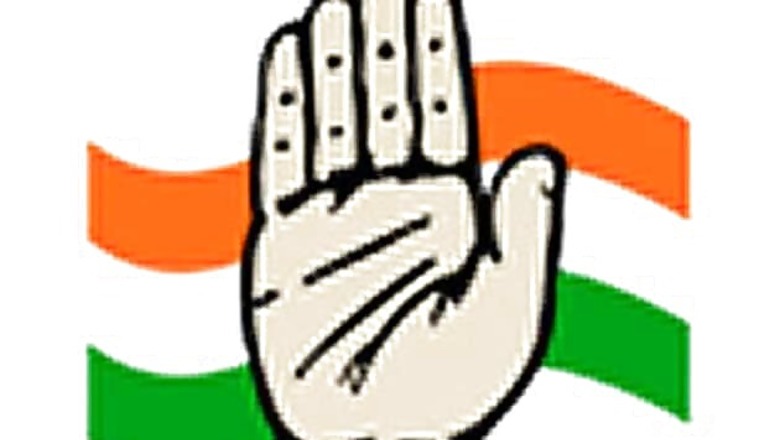
views
It is now close to six months that the Congress party faced one of its most devastating routs in the Lok Sabha elections. The defeat was so staggering that the party drew a blank in as many as twelve states of the country. Since being voted out of power at the national level, the party has additionally conceded defeat in two critical states where it was in power - Maharashtra and Haryana. Given the intensity of the collapse and the long term implications of the party, conceding political space in state after state, one would have hoped for some serious introspection within the leadership to outline a strategy for a planned political comeback.
Clearly, there appears no such plan on the anvil. Congress leaders defend the party (and its leadership) by asserting that an audit is on and it is too early to speak of an action plan for the rejuvenation of the party. The Antony Committee which was asked to assess the factors responsible for the parties poor showing in the Lok Sabha poll, chose to tread the path of 'collective responsibility' to explain the defeat. When 'everyone' becomes responsible, clearly, 'no one' is accountable! The party clearly appears to be in the 'all too familiar' denial mode, with leaders choosing every conceivable opportunity to defend the 'High Command' and shield it from any blame for the current status of the party. To be fair to the Party President and Vice President, after the Lok Sabha defeat, they took full responsibility for the rout. Shouldering the blame requires a logically corollary step - the corrective measures. Very little action seems to be visible from that perspective.
Two issues merit attention at this stage. As the Congress party reconciles itself to its new status as the largest (unrecognized) Opposition party in the Lok Sabha, it needs to take cognizance of the fact that in state after state, it is retreating to the third position. The political space it is vacating is fast being occupied by either state based parties and/or the BJP. Unless the party arrests this steady collapse, it could soon lose its relevance as a major national player. The first challenge the party needs to address is to provide a 'visible, viable, credible' face at the national level. The party Vice President, Rahul Gandhi continues to remain the 'reluctant' politician he has always been. The party today, requires a leadership that is in the thick of political action '24x7'. A 'switch on-switch off' approach would be hopelessly insufficient in the present circumstances. The 'ostrich like approach' of refusing to accept a 'crisis of credibility' in the leadership would be self -defeating. To fond hope among many Congress leaders, that the support for the BJP government, would start waning at the end of the 'honeymoon` period and they (the Congress) would be the natural (and inevitable) choice for the voters to turn back to, seems to smack of an absence of any touch with ground reality. After her defeat in 1977, Indira Gandhi seized the opportunity that 'Belchi' offered and used the Chikamagalur route to return to the Lok Sabha. There was a clear strategy that she worked out after being ousted from power. The aggressiveness with which the Congress party took on the Janata party government in those days, paved the way for the revival of the party. Close to four decades later, though the political circumstances are very different (and much more complicated for the Congress party), there seems to very little, both in terms of theZX initiative of the leadership and in terms of the efforts at the ground level, to galvanize the party.
The Congress road to revival is not just linked to the direction offered by the central leadership. It is also linked to the party providing a legitimate space for 'mass-base' state level leaders to assert their presence. The 'High Command Culture' has led to a situation in which, in state after state, the leaders projected by the party are often those who have the blessings of the High Command. The nature of Congress politics, allows for very little space for leaders to emerge at the state level, based on popular support and sustained involvement in party work at the 'grassroot' level. It may just be incidental that some of the three Congress Chief Ministers who have shown some independent initiative (Siddaramiah in Karnataka, Oomen Chandy in Kerala and Tarun Gogoi in Assam) are physically distant from Delhi and the High Command! It is important to record that prior to its 2014 Lok Sabha victory, the BJP built its base on the strength of the popular appeal of its Chief Ministers in the states it was in power. The role of a Shivraj Singh Chauhan in MP, a Raman Singh in Chattisgarh, a Manohar Parrikar in Goa and even a Narendra Modi in Gujarat cannot be discounted while explaining the spectacular performance of the BJP in these states in the Lok Sabha polls. Whether the BJP chooses a different route after coming to power at the Centre is of fuel for another debate! The Congress route to revival lies very clearly in strengthening its state level leadership and providing them the autonomy and space to craft a state specific action agenda.
New situations and challenges require a capacity to innovate and dare to chart a different course. It does not seem clear whether the Congress party has the `will and energy` to act differently or will it continue to remain in denial and wallow in the illusion that time is the best healer!
(Sandeep Shastri is a noted political analyst and Pro-Vice Chancellor, Jain University, Bangalore)













Comments
0 comment